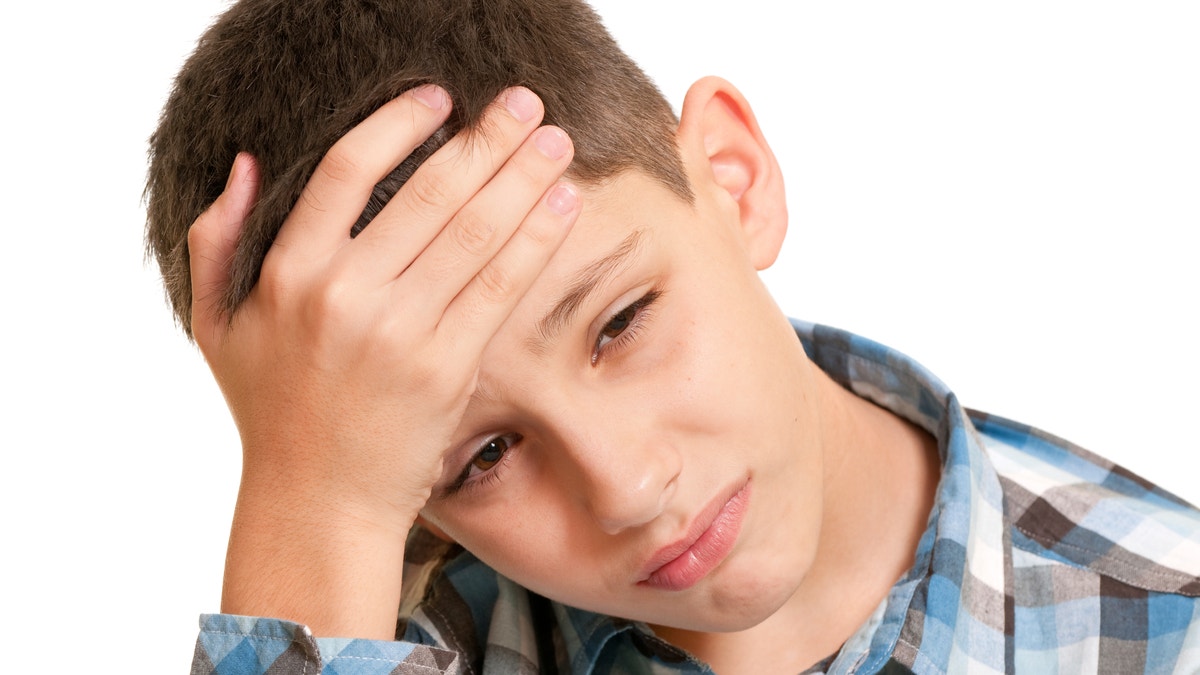
If you’ve ever had a migraine you know how miserable the relentless pain, nausea and sensitivity to light can make you feel— now imagine what it’s like for a child.
For children, migraines can be so severe that they affect learning, athletic performance and friendships.
Here, find out if your kid is susceptible to migraines, learn the symptoms (Hint, it’s not a throbbing headache), and the easy fixes that will help him feel better in no time.
Migraines are common in children
About 10 percent of children between the ages of 5 and 15 suffer from migraines. Before puberty, it’s seen in about the same number of boys and girls but after it’s higher in girls because of the rise in estrogen. In fact, about 50 percent of girls will experience migraines a few days before or on the first day of their menstrual periods.
Migraines have been reported in babies as young as 18-months-old. Although it’s more difficult to identify, if there’s a family history or a parent is a migraine sufferer, they may be able to recognize the signs early.
There’s also some evidence that if a baby has colic, they’re more likely to have migraines as they get older.
“The abdominal symptoms of colic are actually early manifestations of migraine,” said Dr. Andrew D. Hershey, endowed chair and director of neurology and of the headache center at Cincinnati Children’s Hospital Medical Center.
Plus, two conditions, benign paroxysmal torticollis— which can cause a stiff neck— and benign positional vertigo— which can cause a child to suddenly fall— are also thought to be precursors to migraines, said Dr. Howard Jacobs, a pediatrician, headache specialist and an associate professor of pediatrics at Children's Hospital in Columbus, Ohio. Kids who tend to get carsick may be more likely to have migraines, as well.
Although there is a strong genetic link to migraines, environmental factors such as skipping meals or changes in sleep patterns that stress the hypersensitive nervous system into having a migraine can play a role too, Hershey said.
Symptoms of migraines
Unlike tension headaches that can progress from mild to moderate, migraines advance from moderate to severe. What’s more, migraines in kids often look very different than when adults get them. For starters, kids usually don’t have a pounding headache but more of a steady pain and it’s usually on both sides of the head.
Children with migraines tend to complain of sensitivity to light and sound, dizziness, nausea, vomiting, and sweating. Approximately 10 to 25 percent will also experience an aura, such as blurry vision, flashing lights and colored spots before the headache.
Plus, some school-age children have symptoms of a migraine without ever having a headache. It’s a syndrome known as cyclic vomiting and it’s marked by episodes of vomiting over a few hours that often require hospitalization, as well as dizziness and sensitivity to light.
Other children may go undiagnosed because they have an “abdominal migraine,” that causes abdominal pain, usually without fever, diarrhea or vomiting without ever experiencing a headache.
More than just physical pain
Bright classroom lights, lots of noise, homework, peer pressure and bullying is enough for any kid to deal with, but for kids with migraines, it translates to missed school days, problems with learning, extra-curricular activities, sports and socializing. What’s more, between 30 and 40 percent of children with migraines also have anxiety. Kids can be criticized and their peers may even think they’re faking it, since it’s not as obvious a problem as getting the flu might be.
6 ways to prevent and treat migraines
Ask the doctor.
“When a kid says they have a migraine, it’s not just a bad headache and it should be taken seriously,” Jacobs said.
The first step is for your child to see his primary care physician to make sure his symptoms are those of a migraine. For most children, over-the-counter ibuprofen or naproxen may be enough. However, your child shouldn’t take them more than three times a week, because kids with migraines tend to be more sensitive to pain medication. So if they’re taken too often they can get a medication overuse headache which will have the reverse effect, Jacobs said.
Your child’s doctor may also prescribe a prescription medication or natural supplements like feverfew or butterbur, but it’s important to understand the side effects before opting for them.
Eat healthy.
Eating a healthy diet that consists of fruits and vegetables, lean protein, healthy fats and whole grains and eating three meals a day can help stave off hunger and prevent a migraine. Plus, your child should drink enough water so that his urine is clear.
“Their heart is trying to pump energy up to their brain, and the better hydrated they are, the easier it is for the heart to do that,” Jacobs said.
Exercise.
Studies show that obesity is linked to migraines, and one of the best ways to make sure your child has a healthy weight along with diet is to exercise. What’s more, regular exercise will increase energy in the cells of the body and reduce stress that leads to migraines. Your child should break a sweat 30 to 45 minutes, three to four days a week.
Check nutritional deficiencies.
Certain supplements like riboflavin or coenzyme Q10 (CoQ10) can help if your child is deficient. Magnesium may also prevent a migraine, but you should talk to your child’s doctor first.
Sleep.
Getting enough sleep is also an important way for children to ward off a migraine. The National Sleep Foundation recommends school-age children get 9 to 11 hours of sleep each night, while teenagers (14- to 17-year-olds) should get 8 to 10 hours.
Deal with stress.
Modeling and teaching your child coping skills and ways to manage stress is key, especially during the back-to-school season when headaches spike for children, a study from Nationwide Children's Hospital found. Seeking out Cognitive Behavioral Therapy (CBT) with a trained therapist may also help.
